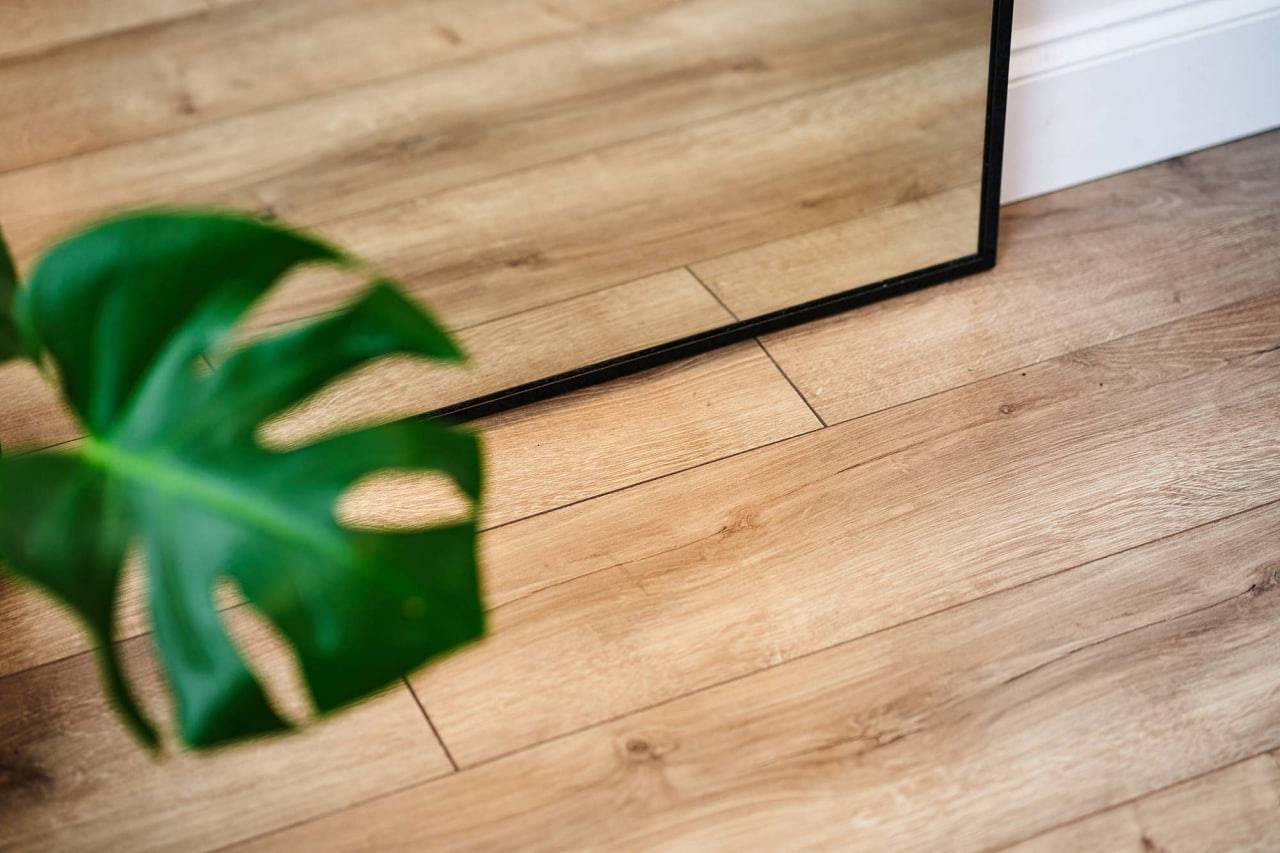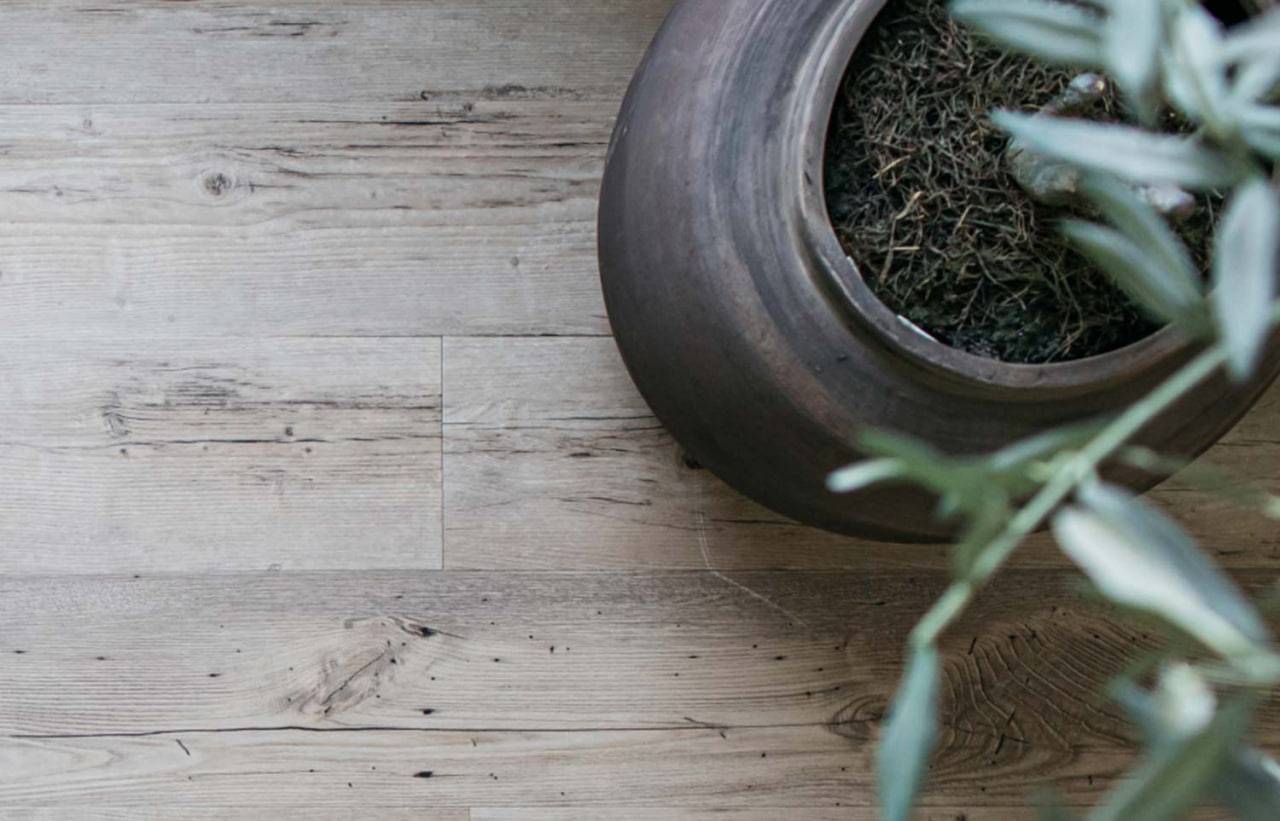Imagine a versatile flooring option that’s stylish, affordable, and practically indestructible. Sounds like a dream, right? Well, vinyl flooring ticks all those boxes, making it a popular choice for homes and businesses alike. But beneath its attractive surface lies a complex environmental story, one woven with both benefits and drawbacks.
In this article, we’ll step beyond the glossy appeal and delve into the true Vinyl Flooring Environmental Impact. We’ll explore the petroleum-based origins and the chemical dance behind its creation. We’ll examine the pros and cons, from its impressive durability to its troubling legacy in landfills. And finally, we’ll equip you with the knowledge to make informed choices about this ubiquitous flooring material.
So, buckle up and join us on this investigative journey. As we navigate the intricate world of vinyl flooring, we’ll uncover its surprising truths and empower you to make sustainable decisions for your living spaces.
Get ready to:
- Unmask the hidden ingredients in vinyl flooring and their environmental footprint.
- Weigh the durability and practicality against the concerns of chemical emissions and waste.
- Discover eco-friendly alternatives and navigate the path towards a more sustainable future for your floors.
Let’s take the first step together and explore the intricate world where beauty and burden collide in the form of vinyl flooring.
Unveiling the Green Threads in Vinyl’s Fabric: A Deeper Dive into its Positive Impacts
Let’s weave a richer tapestry of vinyl flooring’s environmental merits, venturing beyond mere bullet points:
1. Durability: A Champion for Longevity:
Vinyl’s resilience isn’t just about aesthetics; it’s a sustainability superpower. Its resistance to scratches, dents, and everyday wear-and-tear translates to a lifespan exceeding several decades compared to shorter-lived alternatives.
This significantly reduces the environmental footprint associated with frequent replacements, minimizing resource extraction, manufacturing processes, and waste generation. In essence, vinyl’s durability allows you to “tread lightly” on the planet for longer.
2. Maintenance Minimalism: A Friend to Chemical-Free Cleaning:
Forget the backbreaking scrubbing and harsh chemical cocktails! Vinyl’s smooth surface and inherent stain resistance make it a low-maintenance champion.
Regular sweeping and occasional mopping suffice, significantly reducing the need for environmentally unfriendly cleaning products. This translates to fewer toxins released into the air and waterways, contributing to a healthier indoor environment and a lighter burden on wastewater treatment systems.
3. Moisture Master: Defying Spills and Dampening Concerns:
Vinyl’s water-resistant prowess isn’t just convenient; it’s an environmental ally. Unlike materials susceptible to water damage, vinyl shrugs off spills and puddles with ease.
This not only minimizes repair needs and material replacements but also prevents moisture-related issues like mold and mildew growth. In areas like kitchens and bathrooms, where water encounters are inevitable, vinyl’s resistance acts as a shield, protecting not only the flooring but also the overall health of your living space.
4. Recycling Renaissance: A Path Towards Circularity:
While challenges remain, the winds of change are blowing for vinyl recyclability. Advancements in technology and a growing focus on responsible manufacturing practices are paving the way for increased recycling rates.
Choosing vinyl with recycled content further bolsters this positive impact, creating a closed-loop system that minimizes virgin material consumption and reduces landfill waste. This rising tide of innovation holds the promise of a greener future for vinyl, where its lifecycle embraces circularity and resourcefulness.
These are just glimpses into the positive threads woven into the fabric of vinyl flooring’s environmental impact. While not without its complexities, its commitment to durability, low maintenance, water resistance, and responsible recycling practices offer valuable contributions to a more sustainable future for our built environments.
Stay tuned as we explore the other side of the coin, delving deeper into the environmental considerations associated with vinyl flooring in the next chapter.
Unveiling the Shadow Side: Vinyl Flooring’s Environmental Drawbacks
While vinyl flooring shines with its practicality and affordability, let’s not be blinded by its surface charm. Beneath its allure lies a complex environmental story, and it’s crucial to acknowledge the not-so-green threads woven into its fabric. Here’s a closer look at the key negative vinyl flooring environmental impact :
Fossil Fuel Addiction: A Thirst for Depleting Resources
Vinyl’s bedrock, polyvinyl chloride (PVC), is sculpted from the very lifeblood of our planet – petroleum. Its extraction and processing guzzle fossil fuels, spewing greenhouse gases into the atmosphere and accelerating climate change. This dependence on a finite resource paints a bleak picture for vinyl’s sustainability in the long run.
Chemical Symphony, Uneasy Harmony
Beyond its petroleum core, vinyl dances with a cocktail of chemicals, some with a discordant environmental tune. Phthalates, the maestros of flexibility, raise concerns about endocrine disruption and potential health risks. Volatile organic compounds (VOCs), the unwelcome tenors of indoor air, waft from newly installed vinyl, potentially impacting respiratory health and the overall ambience of your living space. This chemical tango casts a shadow on vinyl’s claim to environmental friendliness.
Waste Encore, Muted Applause
While vinyl’s durability extends its lifespan, its curtain call often leads to a landfill encore. Its complex composition and the presence of problematic chemicals make recycling a logistical and financial hurdle. Consequently, mountains of used vinyl accumulate in landfills, a silent testament to the challenges of its end-of-life cycle. This unsung finale underscores the need for innovative solutions to break the cycle of waste.
Sustainability Sonata, Missing Melodies
Compared to the harmonious sustainability symphony played by materials like wood or linoleum, vinyl’s composition remains off-key. Its reliance on dwindling resources, the discordant notes of concerning chemicals, and the muted applause of limited recycling options create a dissonant environmental chorus. While advancements in technology and responsible manufacturing practices offer hope for a more sustainable future, vinyl still needs to fine-tune its composition and performance to truly harmonize with the planet’s needs.
Acknowledging these challenges alongside vinyl’s positive attributes is crucial for navigating the path towards informed choices. In the next chapter, we’ll explore potential solutions and alternative flooring options that can help us rewrite the environmental score, aiming for a more sustainable harmony in our homes and on the planet.
Walking the Tightrope: A Balanced Look at Vinyl Flooring’s Environmental Impact
vinyl flooring environmental impact is a complex one, a tightrope walk between its undeniable practicality and lingering environmental concerns. Its durability shines, reducing resource extraction and waste, while its low-maintenance nature minimizes chemical use and water consumption. However, the shadow of its fossil fuel dependence and the chemical symphony it plays with phthalates and VOCs looms large. The recycling renaissance offers hope, but the challenge of closing the loop on its lifecycle remains.
Ultimately, vinyl flooring environmental impact is a nuanced tapestry woven with both positive and negative threads. Choosing it means acknowledging its strengths while recognizing its limitations. Thankfully, the world of flooring offers eco-friendly alternatives with their own strengths and weaknesses. In the end, informed choices that consider both functionality and sustainability will pave the way for a greener future, step by mindful step.
Remember, the key takeaway is a balanced perspective on vinyl flooring’s environmental impact. It’s not simply good or bad, but a complex story with both merits and challenges. Encourage readers to consider all aspects and make informed choices based on their priorities and preferences.
FAQs
Vinyl flooring’s allure lies in its affordability, versatility, and undeniable practicality. But beneath its sleek surface lies a complex environmental narrative, one woven with both benefits and drawbacks. To help you navigate this intricate story, here are some frequently asked questions:
Is vinyl flooring eco-friendly?
It’s a mixed bag. Vinyl boasts some positive environmental attributes like durability, low maintenance, and water resistance, which translate to reduced resource consumption and waste generation. However, its reliance on fossil fuels, the presence of potentially harmful chemicals, and limited recycling options cast a shadow on its sustainability. Ultimately, vinyl’s environmental impact is a balancing act with both merits and challenges.
What are the eco-friendly aspects of vinyl flooring?
- Durability: Vinyl’s exceptional lifespan minimizes the need for frequent replacements, reducing resource extraction, manufacturing emissions, and waste generation. Think of it as “treading lightly” on the planet for longer.
- Low Maintenance: Vinyl’s smooth surface and stain resistance translate to easy cleaning with minimal harsh chemicals, protecting both indoor air quality and waterways.
- Water Resistance: Spills and puddles are no match for vinyl! Its resistance to moisture prevents water damage, reducing repair needs and the associated environmental burden.
- Recycled Content: Some vinyl flooring options incorporate recycled materials, minimizing reliance on virgin resources and closing the loop on its lifecycle.
What are the environmental concerns with vinyl flooring?
- Fossil Fuel Dependence: Vinyl’s primary material, PVC, is derived from petroleum, a non-renewable resource whose extraction and processing contribute to greenhouse gas emissions and climate change.
- Chemical Concerns: Phthalates and VOCs, often used in vinyl flooring, raise concerns about potential health risks and indoor air pollution.
- Limited Recycling: While advancements are being made, recycling vinyl flooring remains challenging and expensive, leading to landfill accumulation.
Are there eco-friendly alternatives to vinyl flooring?
Absolutely! While vinyl offers undeniable practicality, several eco-friendly options boast impressive sustainability credentials:
- Cork: Renewable, harvested from tree bark, and naturally water-resistant, cork flooring is a champion of sustainability.
- Bamboo: Fast-growing and naturally antimicrobial, bamboo flooring offers a durable and eco-friendly alternative.
- Linoleum: Made from natural materials like linseed oil and cork dust, linoleum is biodegradable and boasts impressive durability.
- Reclaimed Wood: Salvaged and repurposed wood flooring adds a unique touch while minimizing environmental impact.
What should I consider when choosing flooring?
Your choice will depend on various factors like budget, desired aesthetics, functionality, and environmental priorities. Weigh the pros and cons of each option, considering factors like durability, maintenance needs, potential health impacts, and sustainability credentials. Remember, informed choices pave the way for a greener future, one step at a time.
By understanding both the positive and negative aspects of vinyl flooring and exploring eco-friendly alternatives, you can make informed choices that align with your priorities and contribute to a more sustainable future. Let’s strive to walk a path where functionality and environmental consciousness go hand in hand, step by mindful step.



